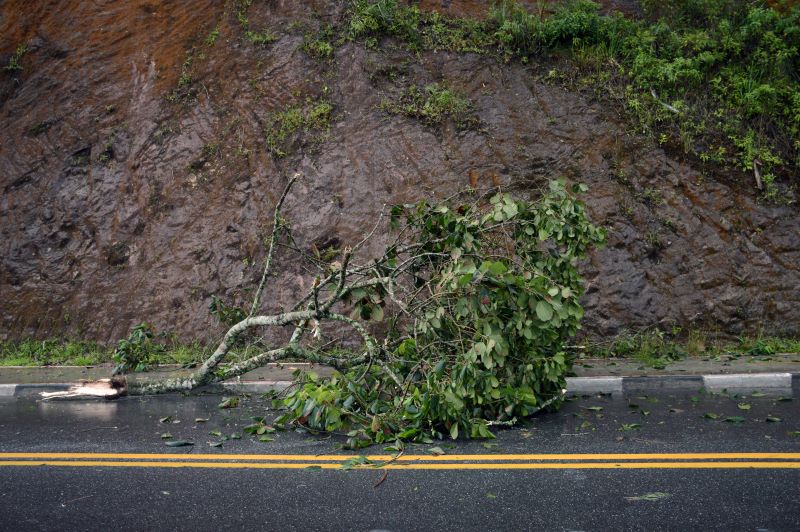Sooner or later it happens to all of us – drowsy driving.
Our mind wanders and our eyelids feel heavy. Suddenly – if only for a split second – we could find ourselves asleep at the wheel. It could be on a long, dark stretch of interstate. You’re lulled by the endless wave of red taillights ahead or the gentle hum of the wheels on the road. Maybe it’s on a more familiar road, heading home after a party or from a long, exhausting trip.
The National Highway Traffic Safety Administration (NHTSA) estimates that, drowsy driving accounts for 91,000 injuries annually. Regardless of where, when or how often it happens, one thing is clear. Drowsy driving is dangerous and distracts the driver. In fact, drowsy driving experts consider driver fatigue a serious threat. Some are saying that it requires a major public health and education campaign to counter.
“Drowsiness is similar to alcohol in how it compromises driving ability by reducing alertness and attentiveness, delaying reaction times and hindering decision-making skills,” said Dr. Nathaniel Watson, president-elect of the American Academy of Sleep Medicine and national spokesman for the National Healthy Sleep Awareness Project, which raises awareness of the dangers of driving while fatigued. “Drowsy driving is deadly, but it can be prevented.”
Those at highest risk of being in a drowsy driving accident, according to the NHTSA, include
- Young drivers age 29 and under, especially young men
- Shift workers whose sleep is disrupted by working at night or working long or irregular hours
- People with untreated sleep apnea syndrome and narcolepsy
Such accidents are easy to prevent and can ultimately save others from getting into a crash of their own.
Drowsy Driving: Know the Causes
Understanding what causes drowsy driving can help you prevent it.
- Drowsiness is a common side effect of many medications. Even non-prescription, over-the-counter treatments can cause sleepiness.
- Studies show a direct connection between the number of hours a person works and their risk of being in a crash caused by drowsy driving.
- Working a night shift also increases a person’s risk of being involved in drowsy-driving crash by nearly six times, according to AAA.
- Research indicates that people with undiagnosed sleep disorders such as sleep apnea and acute insomnia are at greater risk for having sleep-related crashes.
- People with untreated sleep apnea are involved in two to seven times more crashes than those without the disorder, studies show.
- Alcohol only makes fatigue worse. One drink has the same effect on a tired driver as four or five drinks do on a well-rested person.
- Although factors such as heavy meals, warm cars, and long monotonous roads can contribute to your feeling of sleepiness, the real issue is your lack of sleep.
Know the Signs
Drowsy driving is a common auto claim and knowing the signs of it can help prevent such behavior. Do you know if you’re too sleepy to drive? If you experience any of these warning signs, you should pull over or have a passenger take the wheel. Stop driving if you:
- Have difficulty keeping your eyes open and focused, and/or your eyelids feel heavy
- Keep yawning and rubbing your eyes
- Have difficulty keeping your head up
- Can’t remember the last few miles driven
- Miss traffic signs or drive past your intended exit
- Feel irritable or restless
Take the pledge with us! Download and print your certificate to help stop distracted driving.
Sleep, Rumble Strips and Other Prevention Measures
Technology designed to assist drowsy drivers is also evolving. It’s come a long way since the introduction of rumble strips – those grooves in the pavement along the shoulder of the road made to jolt drifting drivers awake. Manufacturer-installed anti-driver fatigue systems in vehicles are becoming increasingly popular.
These include a forward-facing camera that gauges steering accuracy, introduced by Volvo in 2007. And in 2009, Mercedes-Benz began offering Attention Assist, which monitors the driver’s fatigue level and drowsiness based on driver input.
More recently, a Danish firm has developed a dash-mounted device that emits auditory and visual signals that let the driver know it’s time to get off the road. The device – which resembles a hockey puck with lights – establishes the fatigue level of each driver with a series of questions before the start of a trip. It also collects personal driving data during the first few miles that you’re driving.
Other anti-fatigue technology currently in use by the transportation industry may one day be available to the driving public.
Optalert, an Australian company founded by sleep expert Murray Johns, makes glasses with a tiny LED built into the nosepiece of the frame that aim brief bursts of low-intensity infrared light at the driver’s eyes. A score, based on the amplitude and velocity of the driver’s blink – which is slower when drowsy – displays on the dashboard and in real time to a supervisor.
Another example, Seeing Machines’ Driver Safety System, uses a dash-mounted driver-facing camera to detect if the person behind the wheel is paying attention or falling asleep. Used in mining, the tracking software builds a 3-D model of a machine operator’s head using infrared lighting, then measures and analyzes changes in head position as well as rate at which the driver closes their eyes. If the system doesn’t like what it sees, the driver will get an alert with visual and auditory cues as well as seat vibration.
Strategies to Avoid Drowsy Driving
In the absence of such gadgets, these low-tech strategies can also help prevent a fatigue-related crash:
- Schedule a break every two hours or every 100 miles.
- Drink a caffeinated beverage. Since it takes about 30 minutes for caffeine to enter the bloodstream, find a safe place to take a rest while you’re waiting for the caffeine to take effect.
- Travel during times of the day when you’re normally awake.
- Stay overnight rather than driving straight through.
- Check with your doctor about any medications or supplements you are taking and whether they could cause drowsiness or fatigue.
Know What to Do if You See a Drowsy Driver
Now that you know how to prevent yourself from drowsy driving, let’s take a look at what you should do if, what appears to be, a drowsy driver is endangering your path. Signs that a driver may be falling asleep behind the wheel include slowing down and then speeding up or swerving back and forth.
Your safety is top priority. Get out of harm’s way, pull over to the side of the road or into a parking lot to get away from the dangerous driver. You may also consider calling the police using either 911 or the non-emergency line. You’ll want to be able to provide them with a description of the car, license plate number and location the vehicle is driving. It’s important that you only gather this information if safe to do so. Never endanger yourself by attempting to approach or stop the driver.
If a drowsy driver rear-ends your car, damaging your bumper, and worse yet, they don’t have insurance – you can feel confident knowing that your insurance company will protect you. Make sure you have added uninsured motorist insurance coverage to your auto policy to prevent increasing your premium.







Very Helpfuff and understanding
Cold air works very well for me.. And it also depends on how far, speed, surroundings..ext that make a very big decision.
Great information and tip. Thank you for sharing.
Crunchy snacks are best. I pull off and walk around the vehicle. Big rig drivers appreciate a “wake up” horn! Great article!
Crunchy snacks are great. I pull off and walk around the car twice, good water by upper! Thanks for the article. I havre flashed big rig drivers with my headlights. They really appreciate it and give a big honk.
When I drive more than an hour, I always have a bag of sunflower seeds with me. By concentrating on cracking the seeds. I always maintain my concentration and feel alert.
Drive very little any more, but info helpful.
Always have a snack handy to munch on.
Thank you for this article!
Very useful information. Thank you!
I pull off on an exit to a safe place and do stretching exercises, touch my toes, do twists and turns and upper body arm exercises to get more blood moving. It helps wake me up so I can continue on my way.
You forgot one of the best tricks for a drowsy driver — always carry lemon drop candy in your glove compartment. The asorbic acid in lemons (a lemonade or a lemon candy) provides a temporary ‘wakeup jolt’ to the brain…allowing you to get to a safe spot to pull off the road.
Chew chewing gum. Hard to fall asleep if you’re chewing gum
Subaru Driver Assist keep long drives safer as it will pull the vehicle steering wheel in a way that does not allow for drowsy driving. I have it on all my Subaru vehicles along with the eyes sight program. It was why I purchased my new vehicle with it.
What I just read was a good overview of the issue. Gave me good pointers what to do to avoid the problem: A good list of suggestions.
Interesting info. Especially what to do about another driver that appears to be drowsy.
Chewing gum or drinking an icy caffeinated drink through a straw will help keep you awake until you can stop safely. I used these methods for 27 years of professional driving
That’s a good article on this subject. We are planning a trip sometime.
soon. I enjoyed this article a lot. Thanks for sending.
Excellent information. Thanks for sharing!
Make sure u get good uninterrupted sleep before u start your trip. It works for me but everyone is different so get to know u.
Thank you for this article
The best way is, to pull over and take a short break
There were a few things you didn’t mention. Do not fixate on the car in front of you or the lines on the road. Glance around and look at mountains or trees or a farm house. My favorite thing is eat some cornnuts or very sour lemon drops.
The fastest way to get out of being drowsy while driving, is to chew gum.
You’ll be surprised at how fast you get back to being alert.
Pull over and take a nap even 15 minutes can really refresh your mind and help you continue on your journey
Voluntary drowsy driving is one thing. This is a good article about that.
But for shift workers it is a different story. Employers are demanding longer hours, 12 hour swing shifts etc. This is something that needs to be addressed. Lean manning to bolster their profit margins is dangerous to the employees, and the general public who have to share the road with the drowsy drivers created by corporate America.
Good article!